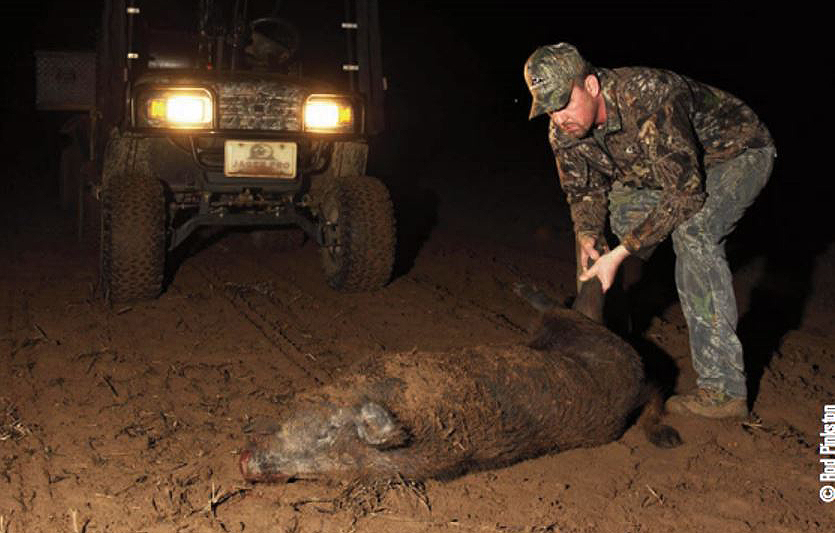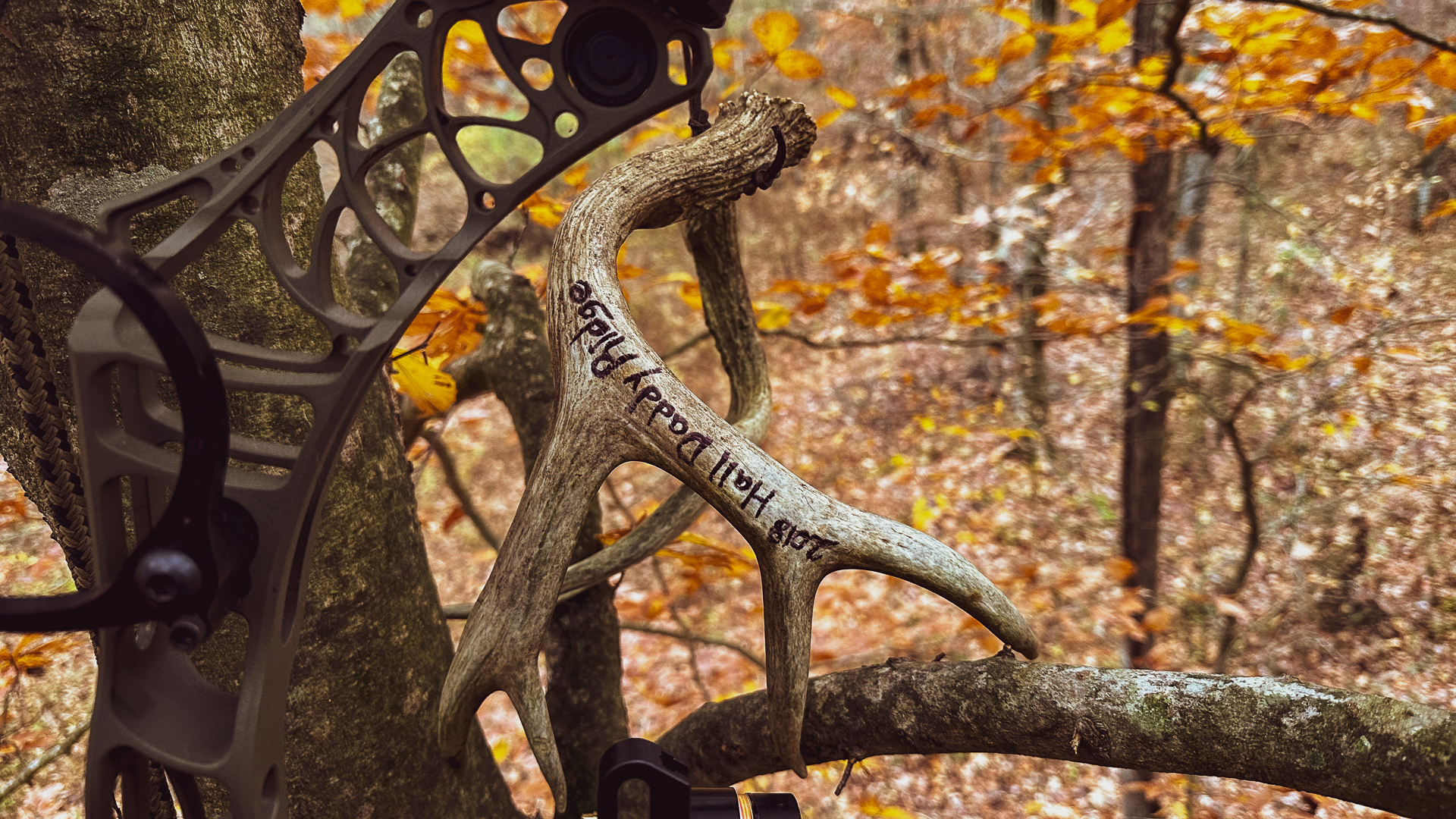Rod Pinkston | Originally published in GameKeepers: Farming for Wildlife Magazine

Integrated Wild Pig Control™ (IWPC) is a strategic approach using a series of innovative control methods and technologies implemented in a specific sequence based on seasonal food sources. Emphasis is placed on “efficient removal of the entire sounder at one time” to eliminate escapes and educating the remaining members. Following the IWPC seasonal strategies in Gamekeepers magazine during the past year should have eliminated 95 percent of the feral swine population from your property. This is the final article of our four-part series on swine management practices and a good time to recap the methodologies and technologies used during the past nine months.
Rapid Recap
Winter months (late December to late March) provided the optimum trapping opportunity as hogs were searching for new food sources. It was the coldest time of year and hogs burned more calories to stay warm. Fall mast crops of acorns and hickory nuts had been eaten and no other agricultural row crops were available, so it was much easier to bait wild pigs to automatic feeders during the winter than any other season. The IWPC winter strategy was to capture entire sounders of juvenile pigs, sub-adults, nursing sows and pregnant sows as they patterned to these supplemental bait sites. This tactic should have eliminated 70-80 percent of the total property population within 90 days using our M.I.N.E.™ Trapping System with cellular remote triggers.
The IWPC spring strategy targeted an additional 10- 20 percent of the feral swine population. Spring months (March, April and May) provided the optimum shooting opportunities at night. Row crops and spring food plots were being planted while snakes, frogs and toads were coming out of hibernation. There were too many food sources available for traps to be effective so the control strategy switched to night shooting operations using our RS-32 and RS-64 infrared optics mounted on AR platform, semi-automatic rifles. High-volume shooting strategies targeted dominate boars and bachelor groups who avoided winter corral traps and were destroying spring plantings.

there is a fresh sign. Here we see a grain sorghum field
destroyed by wild swine.
The IWPC summer strategy focused on eliminating the remaining 10 percent of the population which avoided capture from six-panel corral traps with 8’ wide thresholds and survived previous shooting engagements at night. The remaining pigs had a higher intelligence quotient (IQ) because they had been educated from earlier failed attempts. Therefore, the seasonal control strategy changed to target their summer wallows, pine rubs, water sources, food sources and trails. We covered three innovative methods and technologies needed to implement effective ambush traps, QRF bait holes and a technique known as dumbing the sounder.
Fall Line of Attack
The IWPC fall strategy will target the remaining wild pigs on the property. The seasonal control strategy must identify fall food sources such as maturing row crops (i.e. corn, peanuts, grain sorghum) and falling mast crops (acorns, hickory nuts). A hybrid combination of technologies is needed to implement thermal night shooting operations using a method known as a fatal funnel. Increased fall deer hunting pressure from neighboring landowners may force new populations of feral pigs onto your property. This is also the best time to promote and participate in a state Wild Pig Working Group with local legislative, agricultural, forestry, academic, government and private entities.
The Fatal Funnel
A fatal funnel is a military term referring to a tactic where operators ambush their enemy in close proximity to a forced entry point. We successfully utilize this strategy by controlling access to a harvested agricultural field or low vegetation food ambush trap during summer months. This is the best way to eliminate entire sounders who previously avoided traps and tripod feeders or recently migrated onto the property from neighboring landowners.
Start by installing an 8-foot wide M.I.N.E.™ Gate on the primary trail to the food source then erect seven 18-60™ Panels or 40 yards of fencing on both sides (80 yards total) of the gate. Pigs will quickly begin using the fenced funnel as a forced entry and exit to the food source. Place an I.C.E. Camera (Intel Collecting Equipment) overlooking the trail to the gate opening. The I.C.E. Camera is a wireless cellular camera which sends text photos to a cell phone when the PIR motion sensor detects movement. This technology allows users to gather intelligence and pattern nightly movement without wasting any fuel, time or labor. Operators must identify the total number of pigs in the sounder, number of adults vs. juveniles and understand their nightly feeding patterns before selecting the appropriate number of shooters and weapon systems needed to efficiently engage the problem.

operators ambush their enemy in close proximity to a
forced entry point.
Shooters are equipped with AR-10 platform rifles in .308 caliber topped with 640 x 480 resolution thermal scopes and pre-staged 150 yards inside the food source with wind direction being the most important consideration. A 12 gauge tactical shotgun with thermal optics can be added to the arsenal if a high percentage of juveniles were previously detected. The Fatal Funnel™ strategy is to allow the entire sounder to enter through the gate opening and feed 25+ yards into the food source. Shooters quietly close the distance into the wind within 50 yards of feeding pigs.
Operate on a 3-2-1 countdown to send the first bullet from all shooters downrange simultaneously while pressing the button on the remote control M.I.N.E. transmitter. The remaining pigs will attempt to exit the field only to find a closed M.I.N.E. Gate and 80 yards of panels cutting off their escape route. A single 16-foot long panel strategically located at a 90-degree angle on each end of the funnel will force pigs back to the center. Shooters engage each target with sniper precision to perform 100 percent removal.
Wild pigs are not game animals, they are an invasive species that are spreading throughout the country and wreaking havoc on crops and habitat, causing millions in damage each year.
Fall Deer Feeders
Some state regulations allow deer hunting over bait. These fall automatic feeders quickly become a magnet for feral pigs. Hunters often shoot the largest pig from their deer stand during the daytime, but this just educates the rest of the sounder to be nocturnal. A more efficient strategy is to erect a 35-foot diameter corral trap using six 18-60 trap panels and a M.I.N.E. Gate. Deer will still enter the trap enclosure as the gate threshold is 8 feet wide and 4 feet tall. However, if a sounder of feral pigs enters the trap enclosure, the hunter simply presses the button on the remote control transmitter and drops the M.I.N.E. Gate capturing the entire sounder at one time from their deer stand.
The M.I.N.E. Camera provides 24-hour surveillance by sending wireless photos to a cell phone, email or both within seconds after the PIR motion sensor detects movement. The camera is positioned opposite the trap gate to properly view pigs still outside the enclosure. SMS technology allows users to send text messages back to the camera to trigger the M.I.N.E. Gate closed from their home or office when not sitting in their deer stand. This strategy saves fuel, time and labor by not wasting daily travel time to the bait site. Watch demonstrations of this methodology and equipment to hone your swine management practices.

USDA Feral Swine Management Initiative
In 2014, the US Department of Agriculture (USDA) Animal Plant Health Inspection Service (APHIS) Wildlife Services (WS) received $20 million from Congress to begin a collaborative, national feral swine management initiative with APHIS Veterinary Services as well as numerous local, state and federal partners. The goal of the initiative is to prevent the further spread of feral swine as well as reduce their population, damage, and associated disease risks.
Though swine management practices will occur in many different locations and habitats throughout the United States, these actions will be modified and adapted to best meet the needs and objectives of each individual state. These Wild Pig Working Groups must be established by creating a strategic partnership between state and federal government agencies, academic institutions and interested public-sector groups. This group will be charged with implementing legislative actions to stop the illegal transportation of feral swine, developing public education, performing research and developing/implementing a statewide wild pig control plan.

As wild pig populations continue to grow, we must apply alternative control methods to solve the problem. Innovative landowners and wildlife managers with modern equipment and high-volume removal methods will play a critical role in effectively controlling future wild pig populations.






























